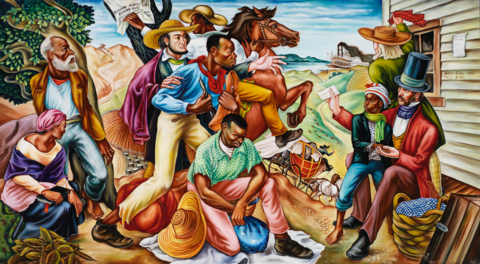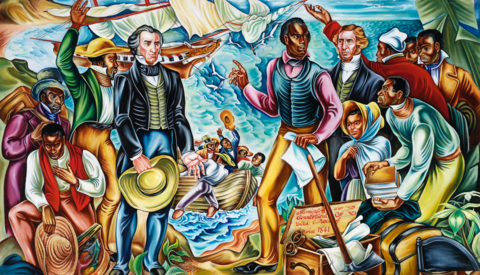These exceptional paintings made their way, after a recent restoration process, to a one-time national tour before returning to their permanent home in Alabama. This was the only time these masterpieces have been available for viewing in the New York metropolitan area.
In 1938, Talladega College President Buell Gallagher commissioned Hale Woodruff to paint a series of six murals portraying noteworthy events that commemorated the transition from slavery to freedom to be displayed in the new Savery Library, then under construction. The first three murals were installed in 1939 and were focused on the 1839 slave uprising that took place on the ship Amistad. Painted on the centennial anniversary of this historic event and depicting scenes of the mutiny, the trial, and the return of the captives to Africa, this remarkable mural series was the first created of the Amistad story in the twentieth century. Talladega’s murals immediately attracted national attention, with cultural leaders in the African American community, in particular, championing the Amistad murals as a statement of pride and hope for racial equality. Today the murals remain relevant symbols of the centuries-long struggle for civil rights.
Rising Up: Hale Woodruff’s Murals at Talladega College is organized by the High Museum of Art, Atlanta, Georgia, in collaboration with Talladega College, Talladega, Alabama.
We wish to thank the generous support of the lead sponsors of the New York exhibition listed below:
Ford Foundation
Talladega College
Macy’s Foundation
FRN



